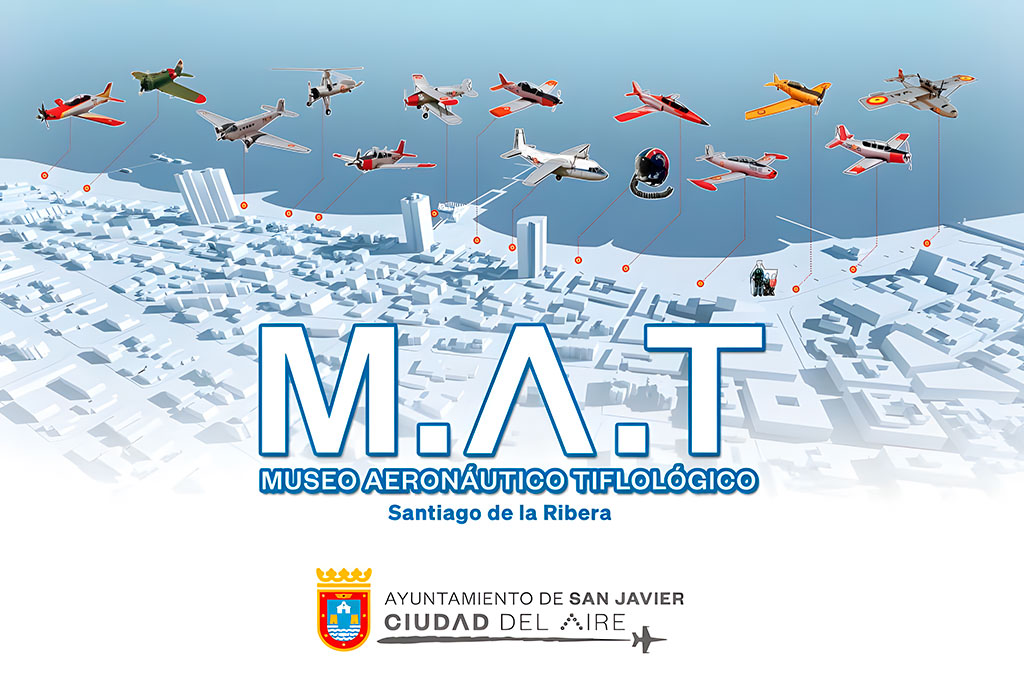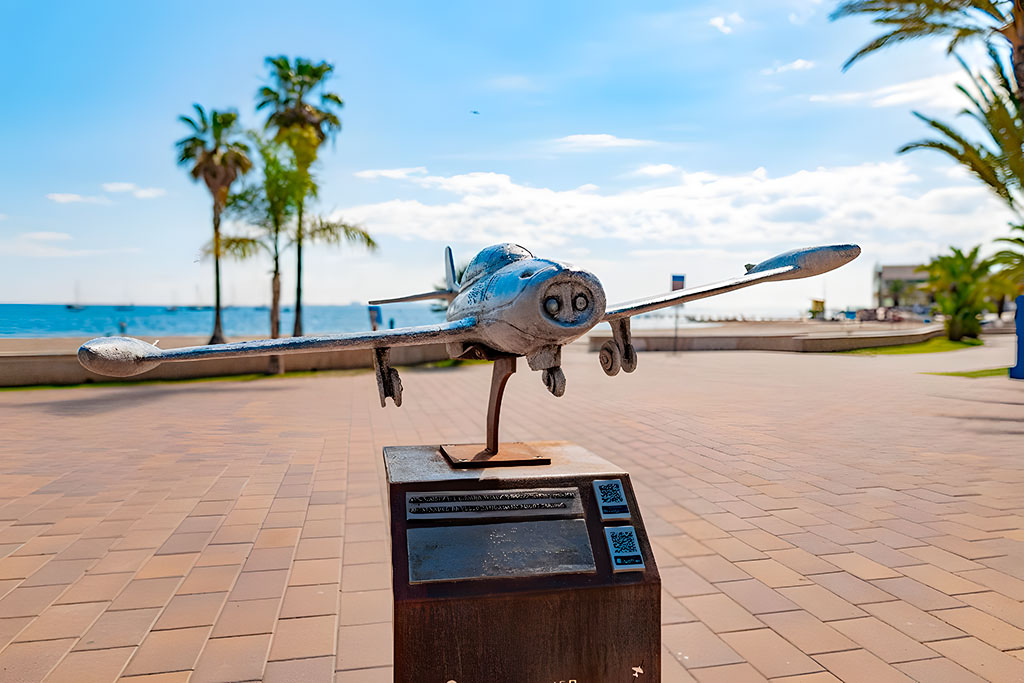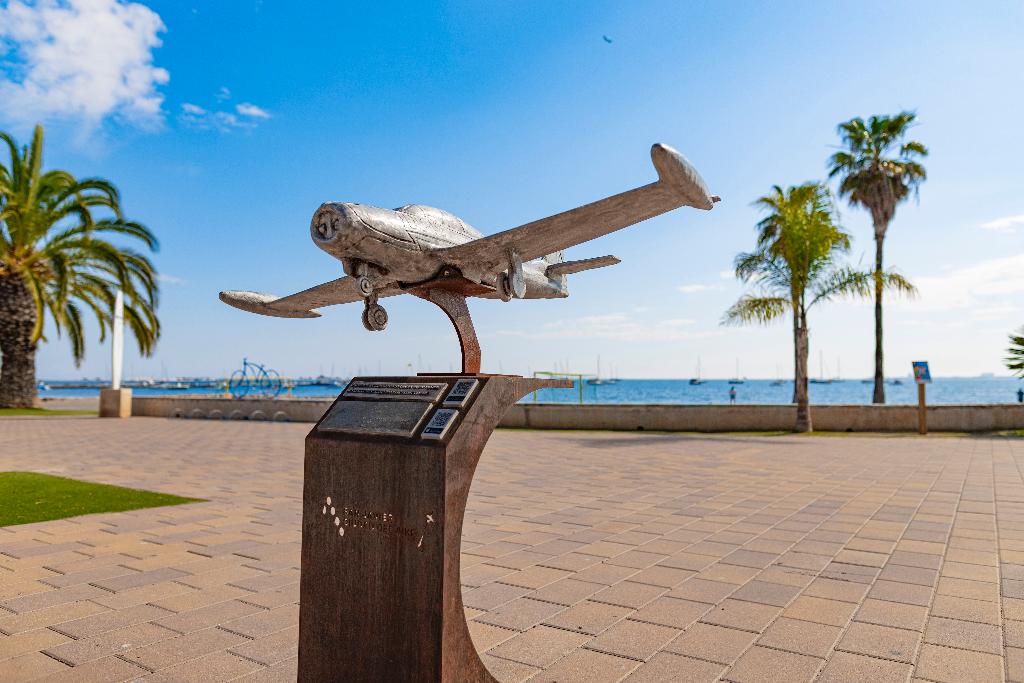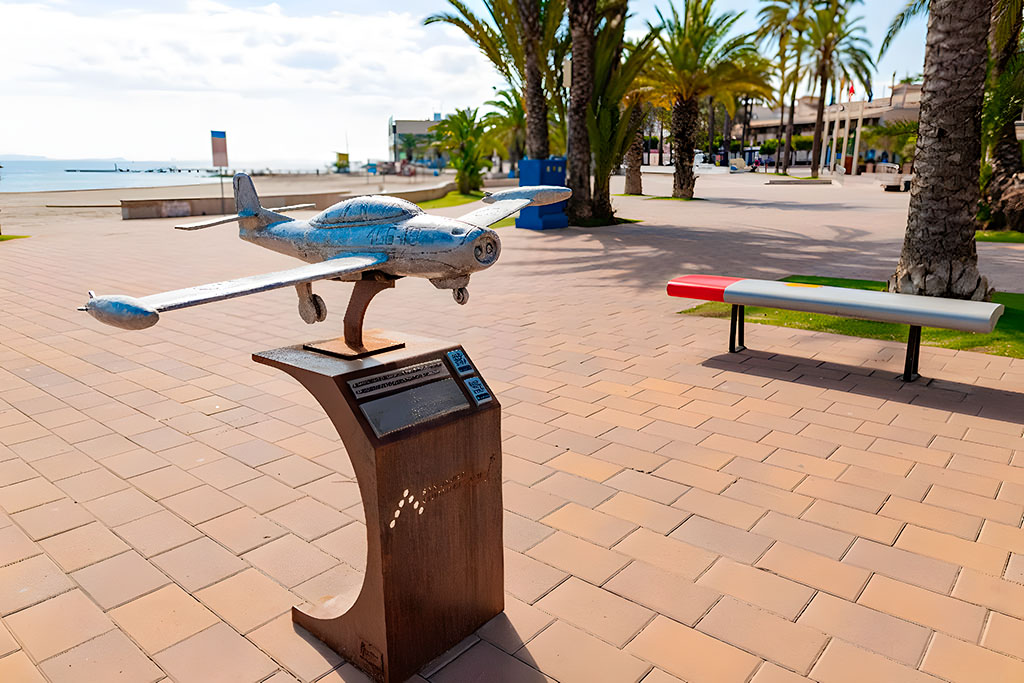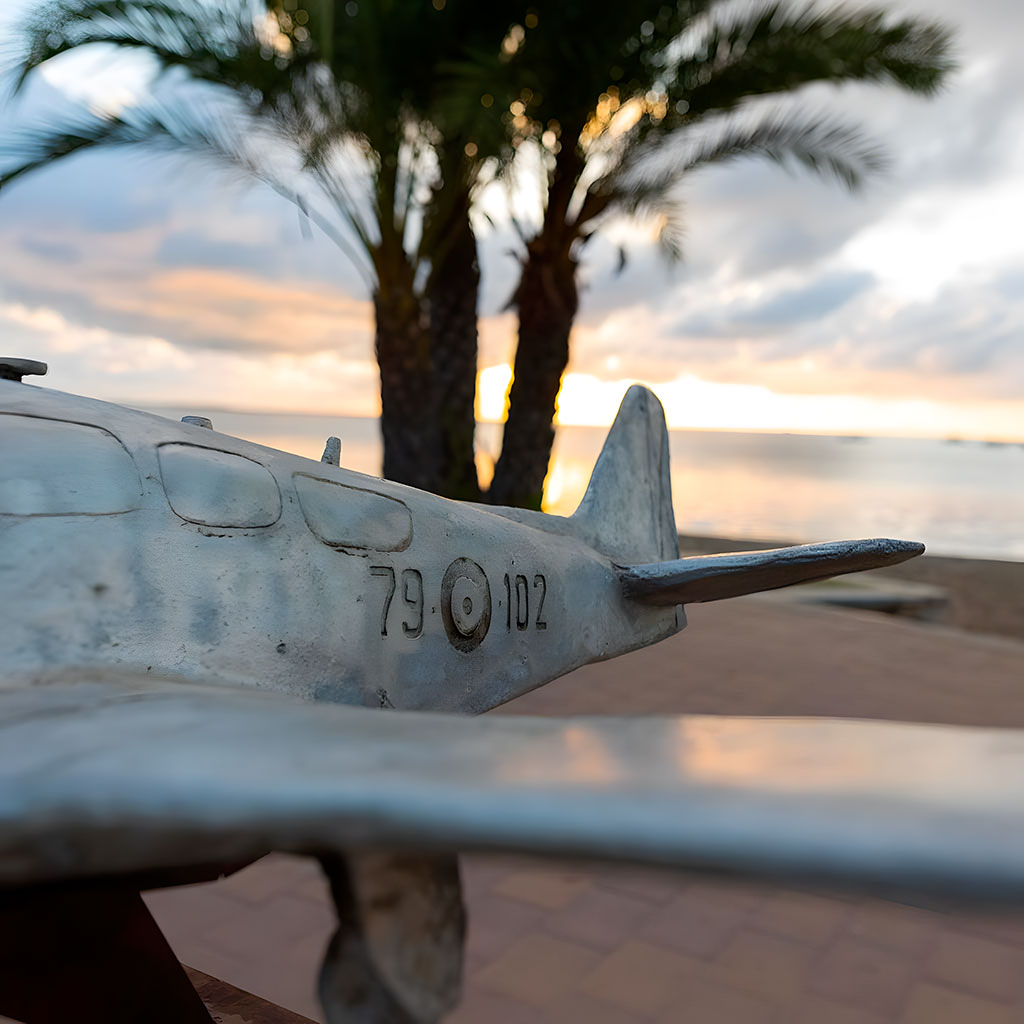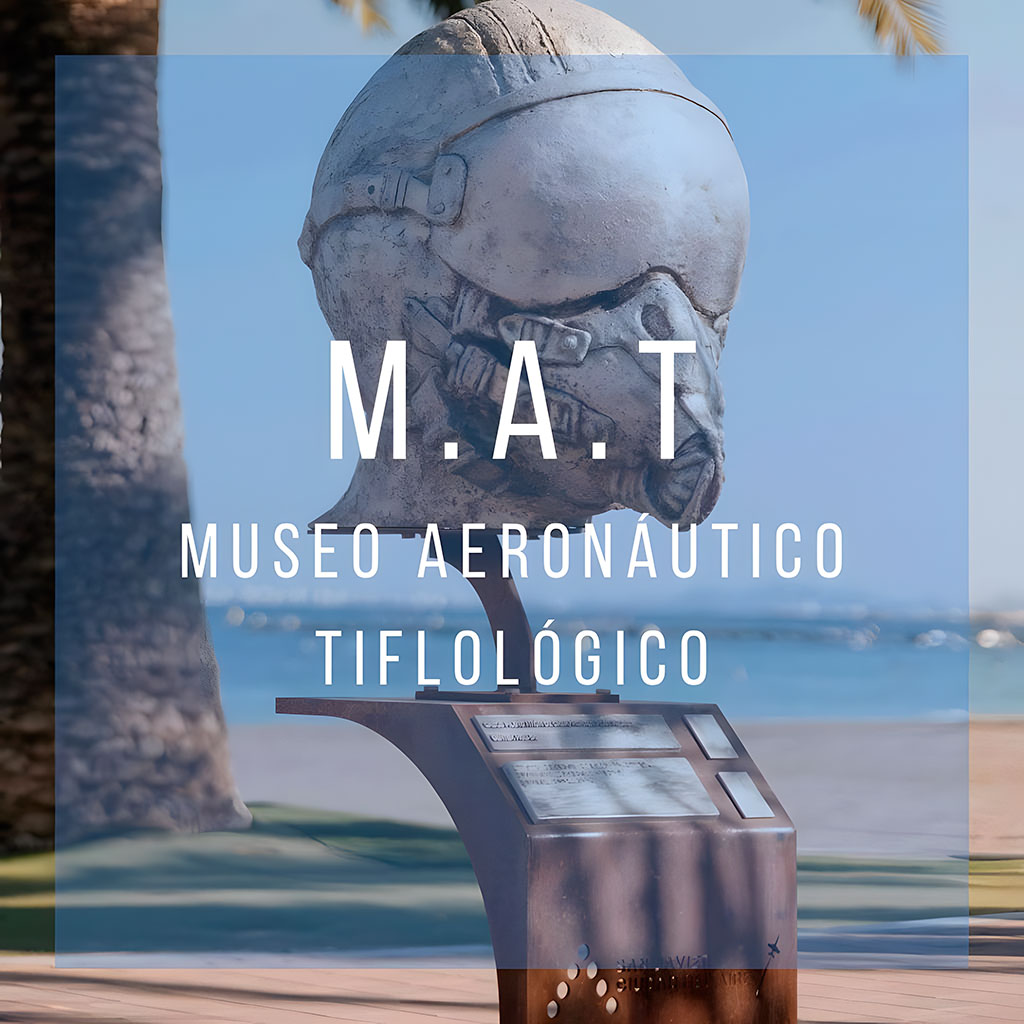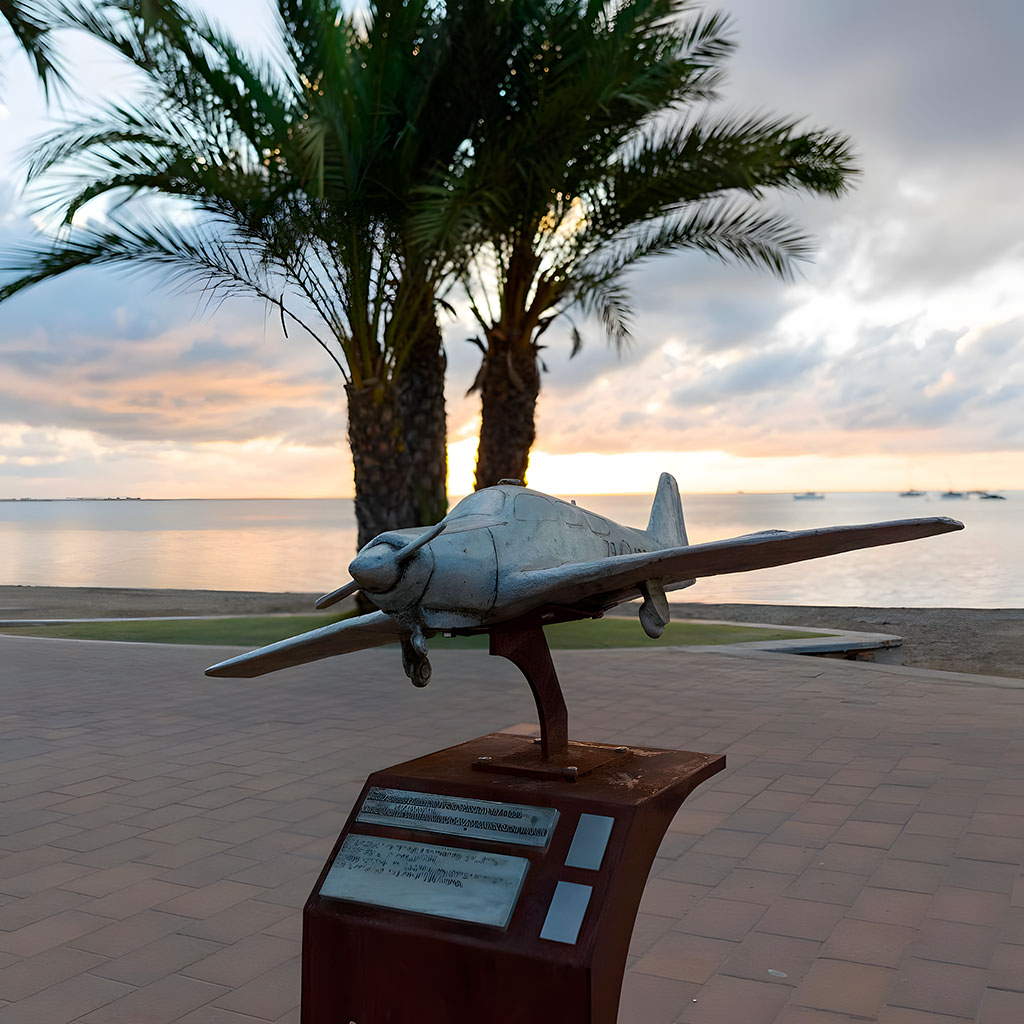Museo Aeronáutico Tiflológico (MAT)

Paseo Colón
30720
SANTIAGO DE LA RIBERA (SAN JAVIER)
https://ciudaddelaire.sanjavier.es/
SAN JAVIER TYPHLOLOGICAL MUSEUM
The Typhlological Aeronautical Museum (MΛT) is a new open-air venue accessible to all and adapted for the visually and hearing impaired, where visitors are provided with information through both sight (the traditional means) and touch. In order to help the visitor’s understanding and enjoyment of the museum, the MΛT uses an easy-to-install QR code system, which provides immediate access to the contents of all exhibits in the museum, thus offering the visitor detailed information of each and every model exhibited throughout the circuit.
The relationship of San Javier with aeronautics is both close and old. The first airfield in the municipality dates back to 1920, when the Spanish Navy decided to build its first naval air station in Santiago de la Ribera as the main base of the Spanish Naval Aviation. After the Spanish Civil War, in July 1943, the military academy of the Spanish Air Force (AGA) was created with the purpose of standardising Air Force officers’ training and it was located at the military facilities of the municipality of San Javier. The uninterrupted operation of air activities during over a century and its prestige as a flight training school have turned this military air base in San Javier into a worldwide reference.
The pieces currently comprising the MAT include a three-dimensional photocall, models of the most characteristic planes throughout the history of the air base, and benches designed to capture the essence of each aircraft by reproducing their distinctive color and aeronautical insignia.
1. Dornier J"WAl"
2. Beechcraft T-34 "Mentor"
3. North American T-6 "Texan"
4. Hispano Ha-200 "Saeta"
5. CASA C-101 "Mirlo"
6. Flight helmet from the Patrulla Águila (Eagle Patrol).
7. Aircraft T-12 Casa-212 "Aviocar" 1974-2003 Navigation School.
8. Aircraft ENAER T-35 C "Pillan" 1996-2015 Elementary Flight Trainer.
9. Aircraft E-.3-B Bucker 1945-1976 Elementary Flight Trainer
10. Aircraft Beechcraft F-33 "Bonanza" 1974-1994 Navigation Flight Trainer
11. Autogiro C-4 1922-1923 Experimental Autogiro built by Jaun de la Cierva
12. Aircraft Casa C-352-L Junkers 52 1947-1973 Navigation School.
13. Aircraft Polikarpov I-16 "Mosca" or "Rata" High-Speed Flight School
14. Aircraft Pilatus PC-21 Elementary and Basic Flight Trainer".
El patrimonio y el turismo son actualmente una herramienta básica para desarrollar una ciudad accesible y sostenible. Es en sentido que surge la idea de crear el primer Museo Aeronáutico Tiflológico (MΛT) al aire libre, que es un nuevo espacio accesible para todo tipo de público y adaptado a personas con discapacidad visual o auditiva, en el que la información, además de la tradicional visual, se canaliza a través del sentido del tacto. Para favorecer la comprensión y disfrute, el MΛT utiliza un sistema que por código QR, de fácil instalación, facilita el acceso inmediato al contenido de todas las piezas que componen el museo, ofreciendo al visitante información detallada de cada una de las maquetas expuestas a lo largo de todo el recorrido del museo.
Todas las maquetas disponen de un texto en braille con los datos básico del avión.
La altura a la que están colocadas las maquetas es de aproximadamente un metro, lo que facilita que el visitante con limitaciones visuales y/o con movilidad reducida pueda disfrutar de la visita cultural.
A lo largo del recorrido del museo hay instaladas una serie de balizas sonoras que, a través de la descarga de la app beepcons, van indicando al visitante el lugar en el que se encuentra en referencia a la maqueta de los aviones más próxima.
En el mismo sentido, el atril informativo del museo es regulable en altura, adaptándose a las necesidades del visitante.
Las piezas que componen actualmente el MAT son 13 maquetas de los aviones y otros elementos com oun photocall tridimensional, un un casco de aviación y bancos diseñados para recoger la esencia de cada uno de los aviones reproduciendo el color y escarapela aeronáutica que los caracteriza.
¿Qué es BEEPCONS?
Este proyecto impulsado por Fundación ONCE, el sistema BEEEPCONS se define comoun sistema de guiado por medio de Balizas inteligentes “beepcons” que facilitan alas personas con discapacidad el acceso a los contenidos de los museos.Tanto en visita guiada como libre, el usuario accederá a información sobre las obras,videos y audios explicativos. Asimismo, incorpora reconocimiento automático de imágenespara poder acceder a la información de cualquier obra con sólo enfocarla con eldispositivo móvil.También incluye el modo juego, con el que el visitante puede aprender aún más y de unamanera diferente y divertida con técnicas de gamificación (aplicación de técnicas propiasde los juegos en ambientes no lúdicos) acerca de los trabajos expuestos; e informaciónsobre el tipo de accesibilidad, así como vídeos explicativos en lengua de signos yaudiodescritos.Los Beepcons funcionan como balizas señalizadoras basadas en la tecnología ibeaconsque se apoyan en una APP móvil para enviar información relevante del entorno a laspersonas que se encuentran cerca. De este modo, los Beepcons permiten:•Avisar de la cercanía de una zona señalizada, enviando una notificación al smartphonedel usuario.•Informar sobre que hay en la zona y a que distancia, mostrando información de todoslos elementos existentes y sus descripciones, así como si fuera necesario ampliar lainformación redirigiendo al usuario a una localización•Localizar elementos cercanos, gracias a una de sus particularidades únicas a nivel deaccesibilidad, haciendo que el propio beepcon emita un pitido para que asi pueda serencontrado fácilmente.A su vez, los beepcons son compatibles con los protocolos de comunicación del resto debalizas punteras del mercado (iBeacon y Eddystone) lo que los convierte en una de lasmejores opciones y brinda posibilidades casi infinitas.La app se encuentra disponible para móviles compatibles con bluetooth de baja energía,para los sistemas operativos iOS y Android. Cuenta con una herramienta online paraactualizar contenidos desde internet.Este sistema es efectivo en otros campos comoturismo y espacios patrimoniales visitables.Estás son algunas de las consideraciones básicas que deberían ser comunes a todos los museos y lugares de ocio.


